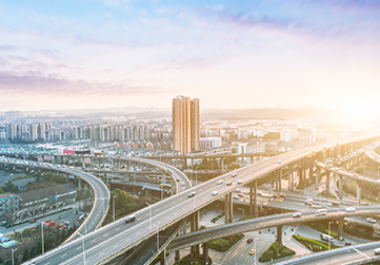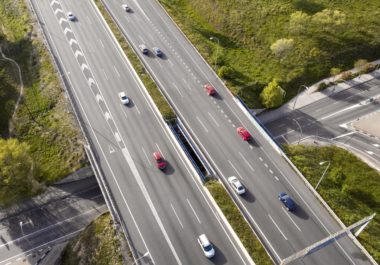Our DMx range meets all international standards and is available in aluminium and steel to meet all your needs.
The electricity consumption of the equipment has also been improved to optimise our products’ service life and limit operators’ running costs.
DMx: dynamic signalling for lanes and roadways

To optimise the effectiveness of infrastructure, reduce congestion and lower related pollution, there is an increasing need to dynamically manage key roads (roads with fast-moving traffic).
Distribute flows on a section of highway or a lane to adapt them to the traffic, with an emphasis on ensuring that the information intended for the user is of a high quality and easy to read.
The DMx dynamic lane control product range addresses these issues:
- Lane assignment (current sections, toll booths and tunnels)
- Dynamic speed limitation
Video
Product Benefits:
- Available in full-matrix and full-colour
- Dedicated management tools available
- High readability
- Maximum angularity
- Complies with optical standards
- Low running cost
- Service life of over 10 years
DMx Assignment of current section lanes

Lane assignment management, which is widely used around large towns (or cities) and interurban roads, caters for a number of applications such as alleviating congestion on a section of the carriageway, implementing a reversible lane (managing commuter traffic) and even the option to divert traffic flows.
DMx Toll lanes

Tool booths are a complex environment: numerous payment methods, lane closures, designated lanes; there is a significant amount of information to convey to users, which changes frequently.
This poses a host of challenges for infrastructure managers who need to ensure that their toll booth is running smoothly, guarantee safety and, above all, limit congestion, in order to deliver the best possible user experience for their customers.
We have adapted our dynamic signalling signs to this specific use, which requires a very high level of clarity, a large viewing angle and a high degree of reliability.
DMx Tunnel

Tunnels are restrictive environments for highway operators (pollution, maintenance, etc.) and potentially hazardous for users. The safety measures and equipment used need to be of the highest standards, and easy to service and maintain.
Our displays provide operators with the means to communicate simply, dynamically and quickly with the user, regardless of the visibility conditions in the tunnel.
Our equipment comes with a high level of protection (IP65, D4) in order to increase its resistance to pollution, water and dust. It also enables adaptive light management, ensuring the best possible clarity.






